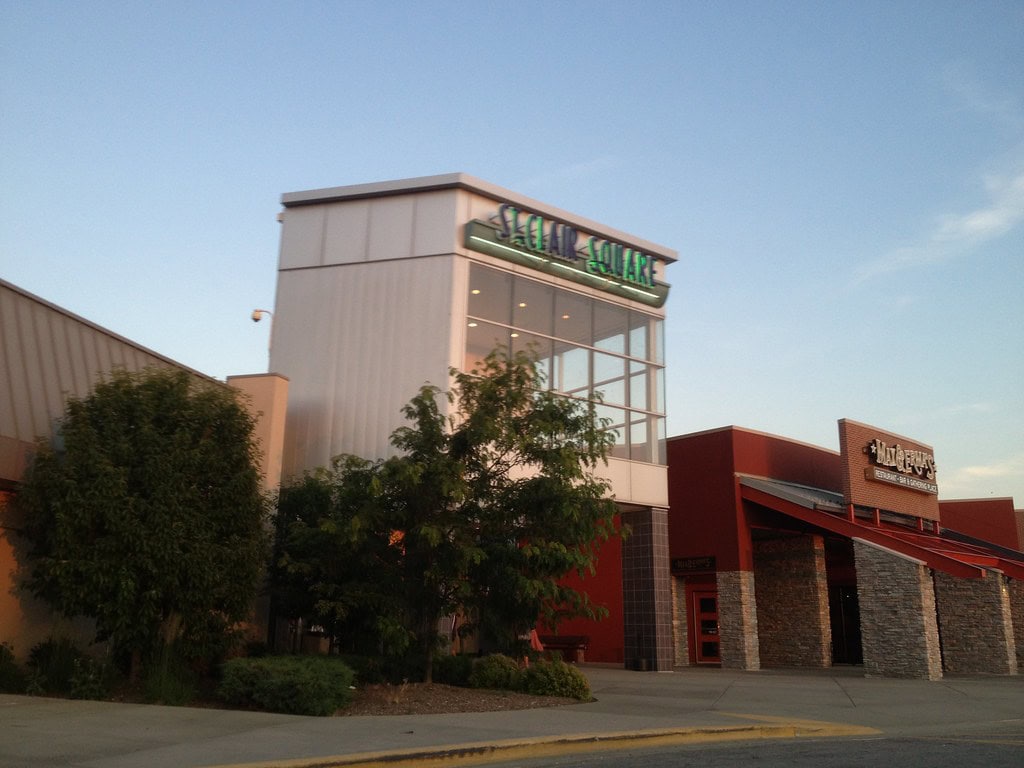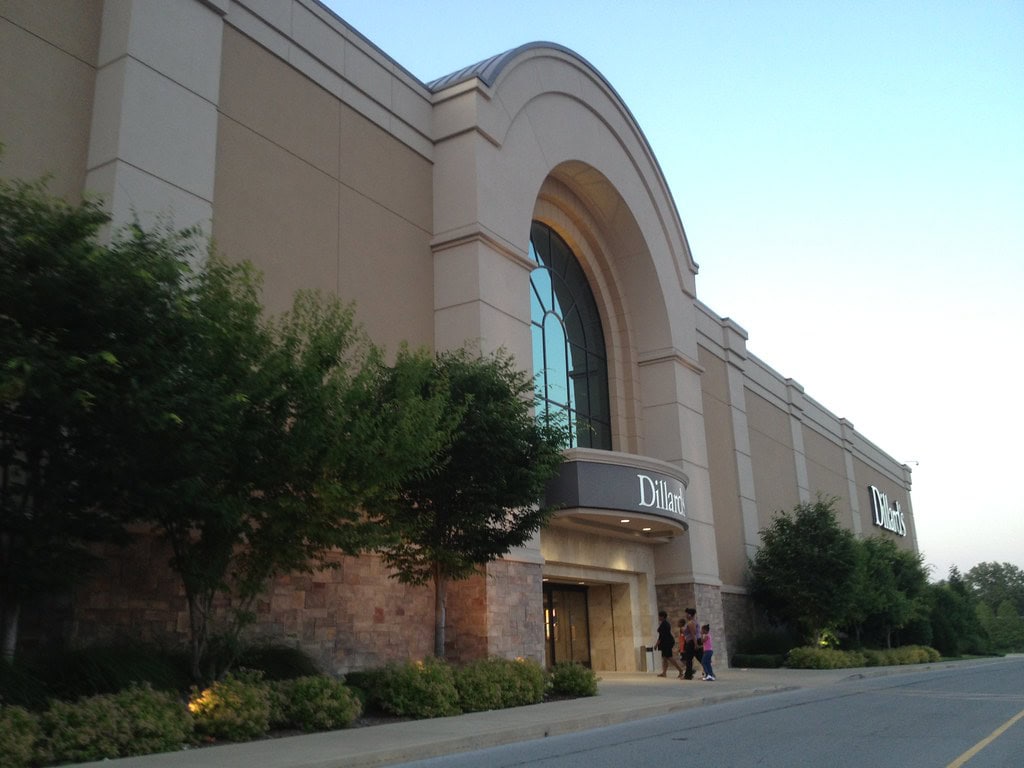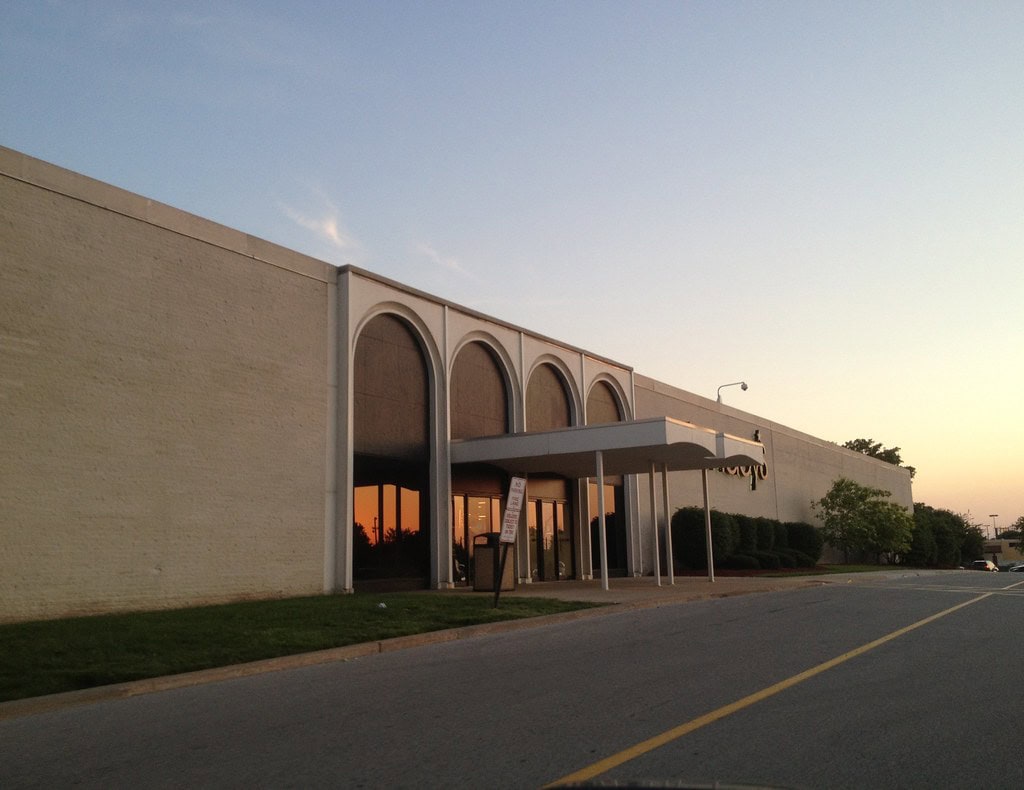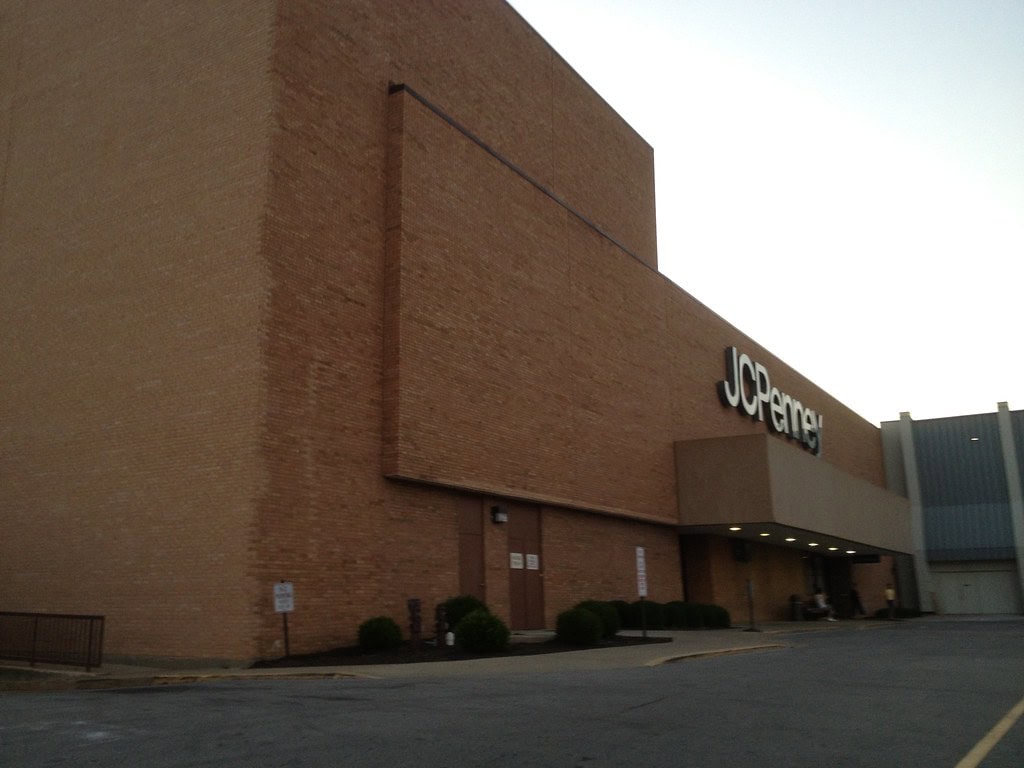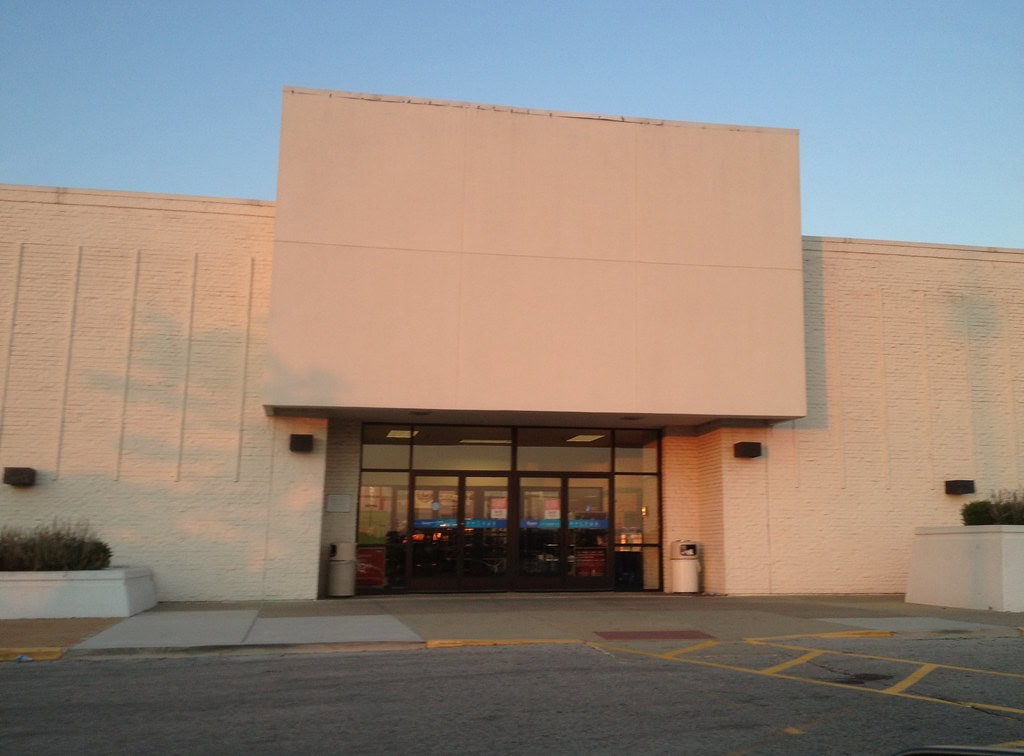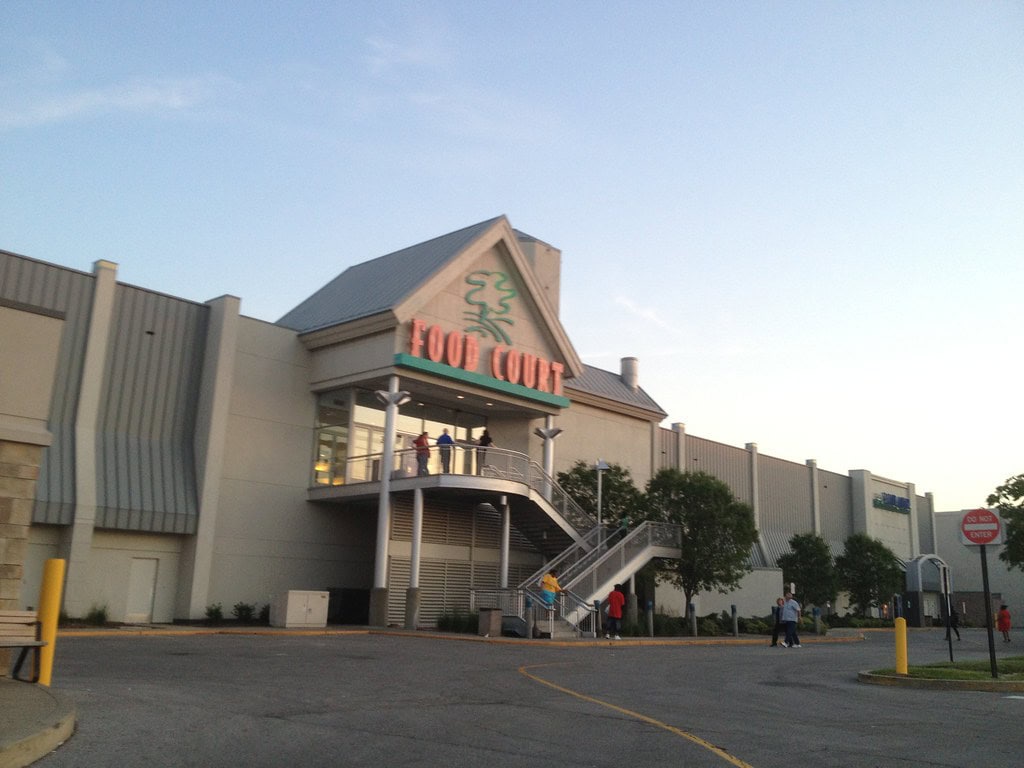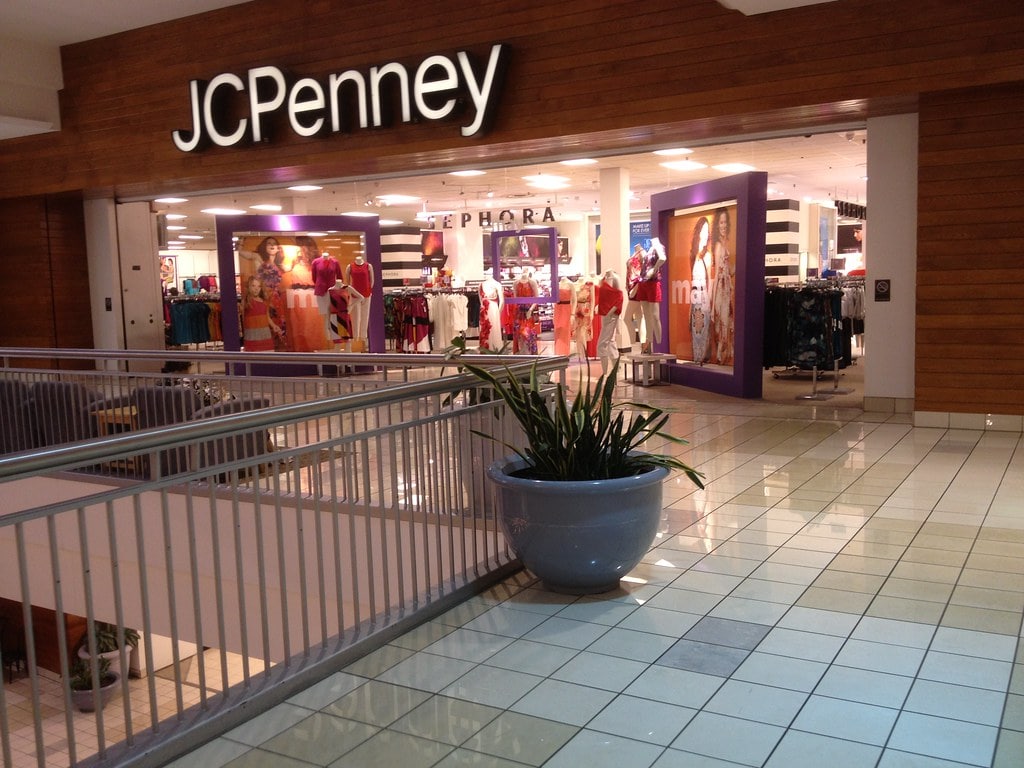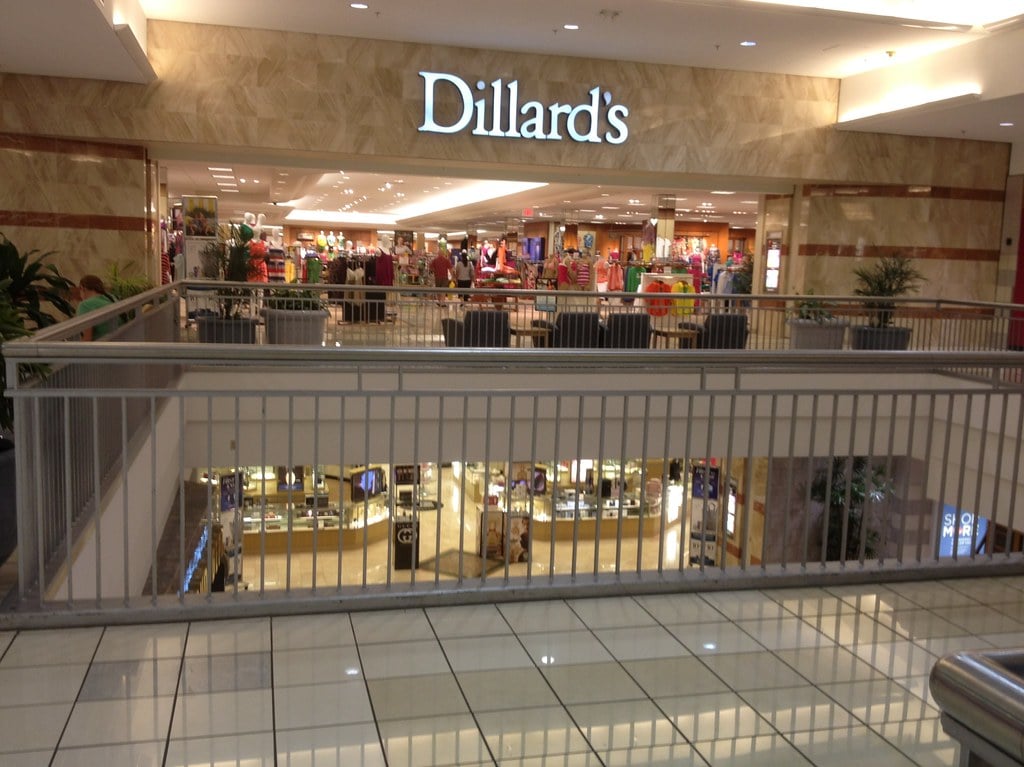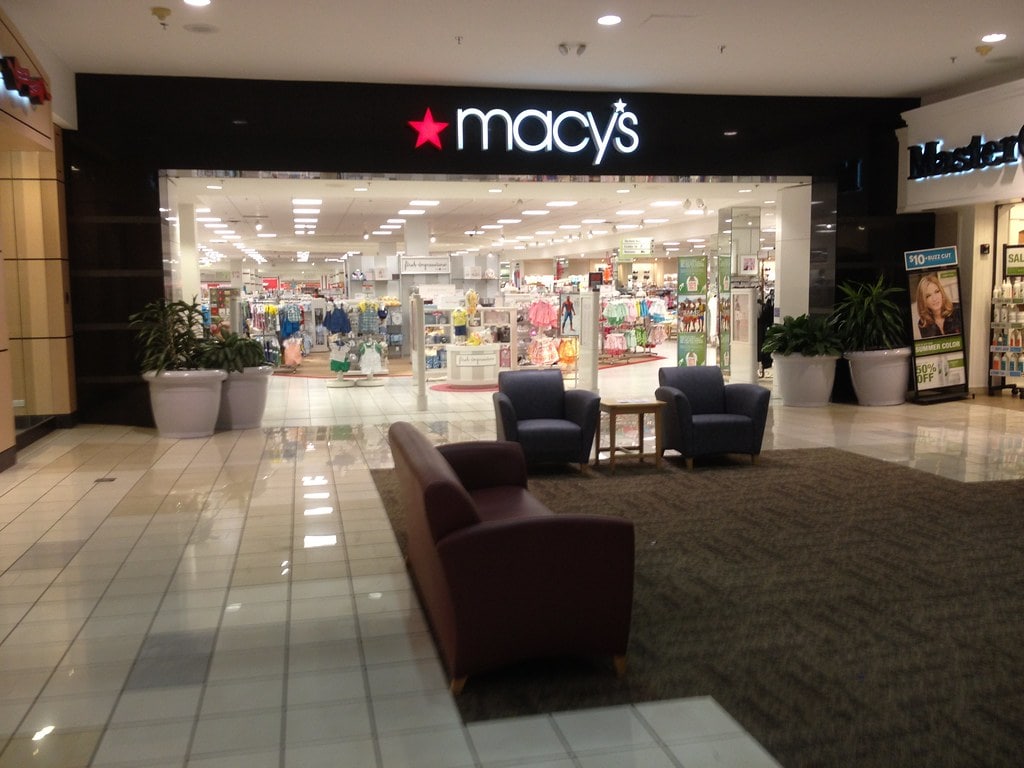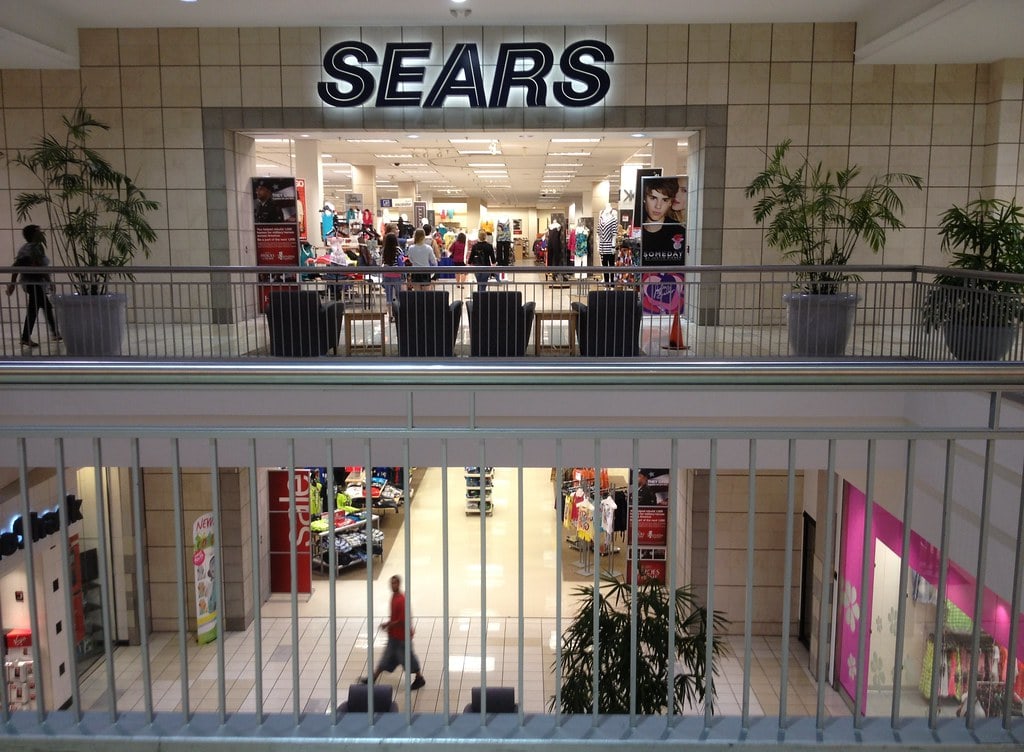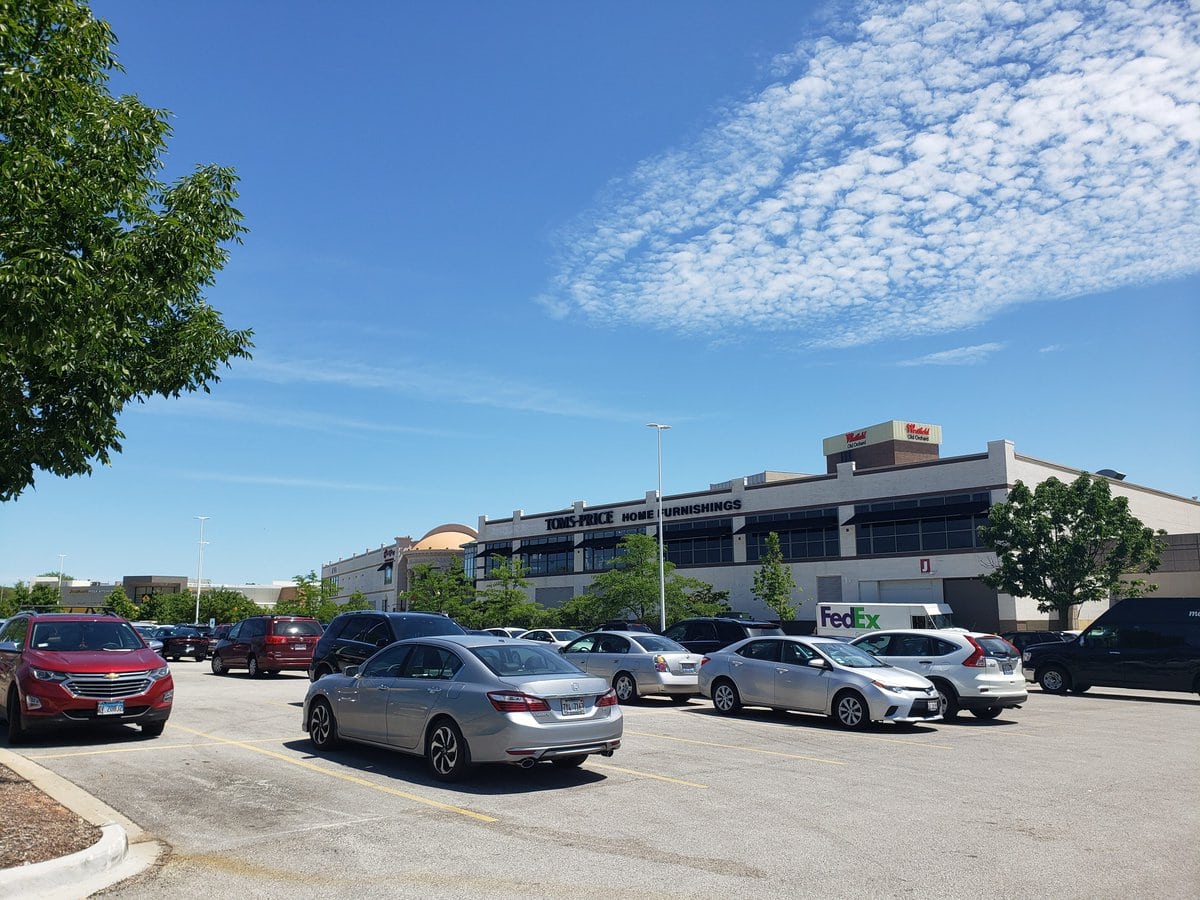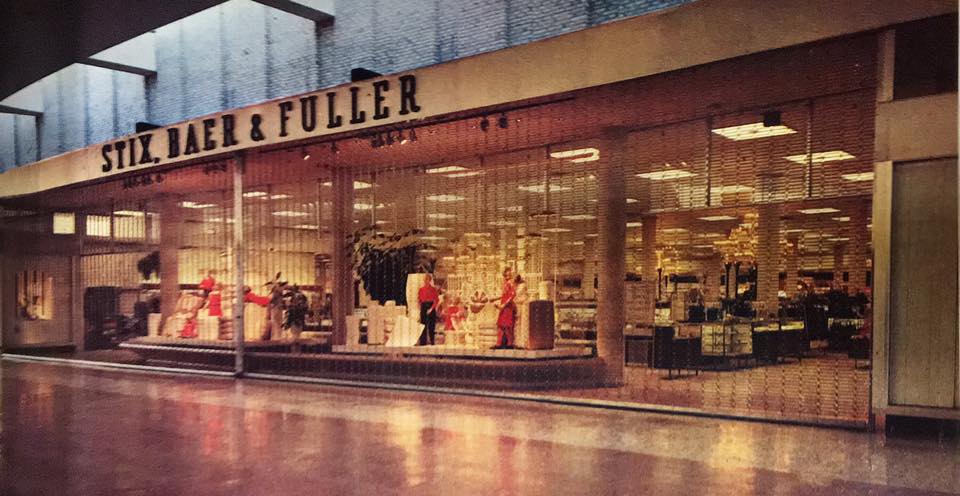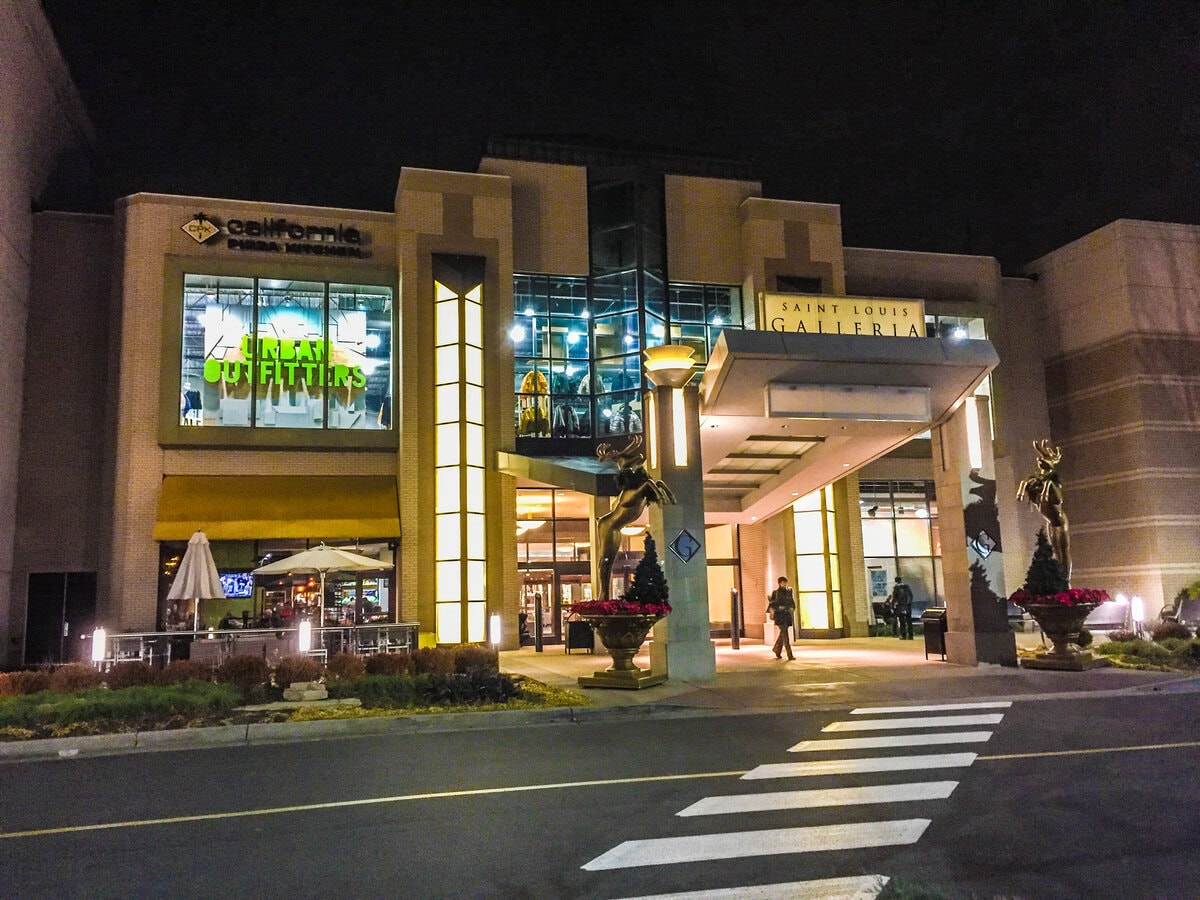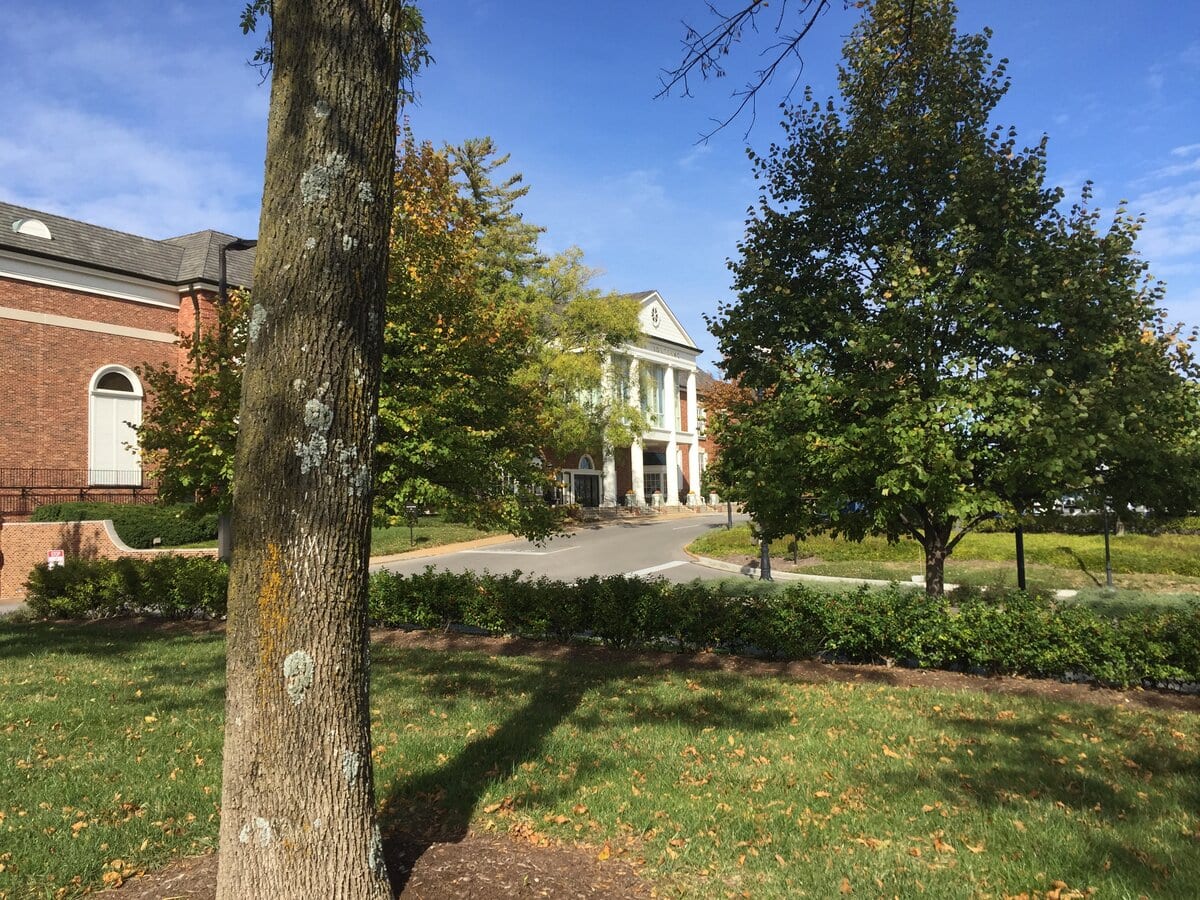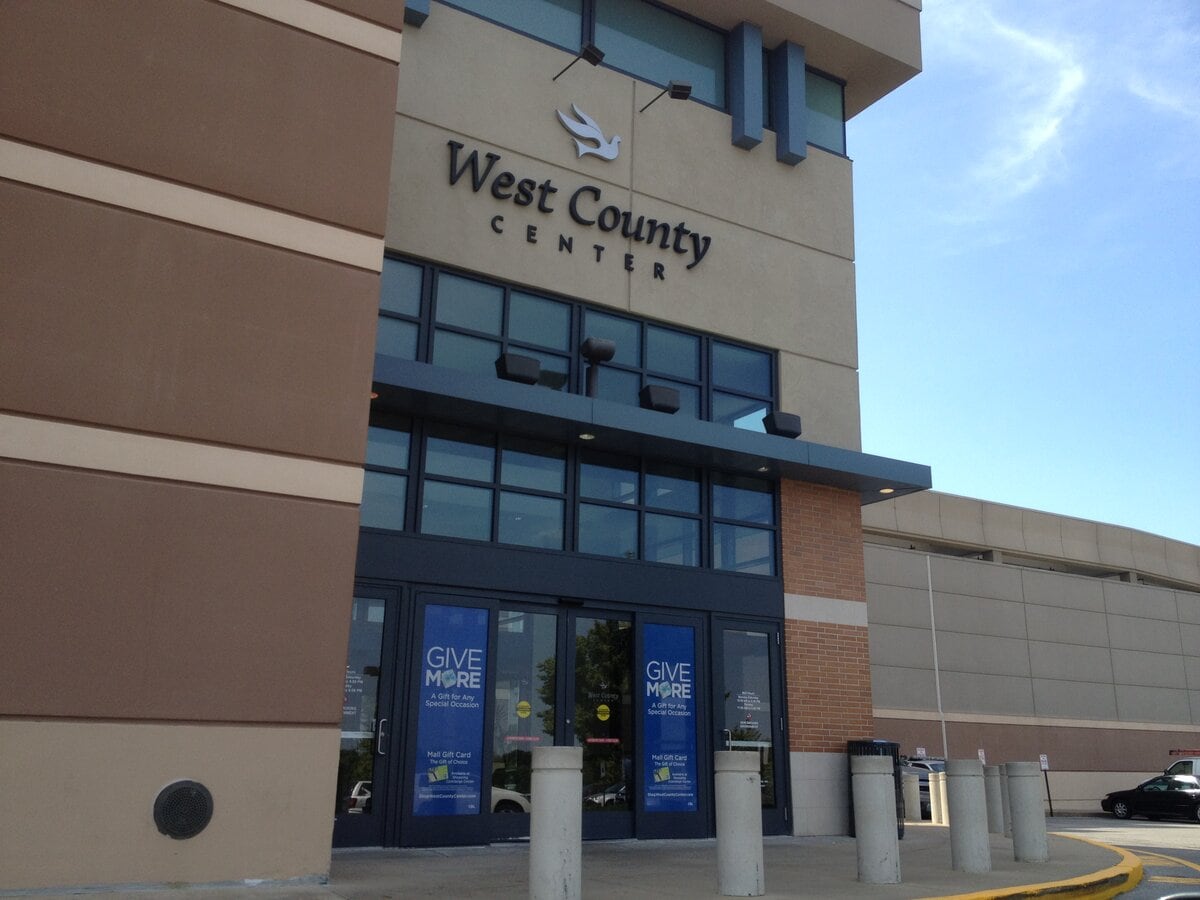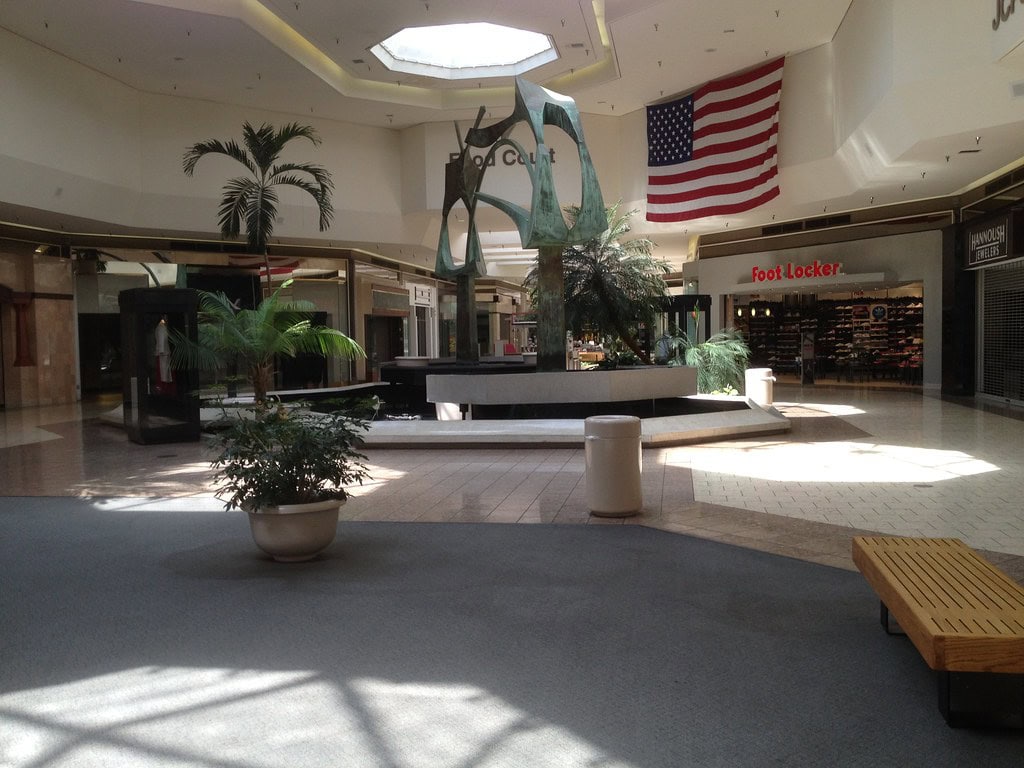Dirt Lots and Storefront Glass (1974-1979)
The site was cleared on a wide stretch near Illinois Route 159, not far from where the new subdivisions ended. May Centers, the real estate division of May Department Stores Company, started building in phases.
Famous-Barr opened first, in October 1973. The store stood alone for a while, connected to the mall structure but surrounded by unfinished corridors.
Construction on the rest of the St. Clair Square mall moved forward in pieces. Walkways came next, with terrazzo tile and flush-set skylights. Sears opened in April 1975. JCPenney followed in January 1976. Once all three anchors were in place, the interior could be fully connected.
Most storefronts used block-letter signage in white or silver. Early tenants included Waldenbooks, Chess King, and Hickory Farms.
There were vending machines near the JCPenney entrance and concrete planters spaced along the main floor.
Parking lots wrapped around the building, wide and exposed. No trees had been added yet.
Military families from Scott Air Force Base were common visitors, along with residents from Belleville and East St. Louis.
In 1979, Stix Baer & Fuller opened a fourth anchor across from Famous-Barr.
The store matched the two-level layout and finished the last open corner.
By the end of the decade, every major space had been filled.
New Owners, New Floors, Same Walkways (1980-1989)
Stix Baer & Fuller opened on April 23, 1979, finishing out the fourth anchor slot.
Five years later, in 1984, that location rebranded as Dillard's.
The sale came when Associated Dry Goods sold the division to Dillard's as part of a broader portfolio shift.
Ownership changed in 1989. May Centers sold St. Clair Square to The Hahn Company, a California-based real estate firm already managing other regional malls.
Hahn handled operations heading into the 1990s.
No major renovations were recorded during the 1980s. There were no expansions and no announced architectural upgrades.
Interior updates, if made, were not documented in public reports.
By the end of the decade, St. Clair Square was operating as one of the five largest malls in the greater St. Louis metro area.
Its footprint stood out along Illinois Route 159. Traffic on weekends stayed steady, with anchors holding strong and occupancy levels remaining high.
The food court hadn't been built yet, but the structure was near capacity.
Food Courts and Midweek Crowds (1990-1999)
The food court opened on October 4, 1993. It was called the Square Meal and took up a central spot on the upper level.
The design included eight food bays and open seating set between the vendor counters.
Fixtures were mounted above each stall, and natural light reached the space from the atrium.
At the time, the mall was still under The Hahn Company, which had owned the property since 1989.
Hahn sold it in 1996 to CBL & Associates Properties. Under CBL, renovations were gradual.
Signage changed at the entrances. Color schemes shifted slightly indoors.
By the late 1990s, the core floor plan had stayed intact for over twenty years.
Occupancy remained strong, and most tenants operated through both weekday and weekend hours.
New Names, Bigger Boxes (2000-2009)
In 2006, Famous-Barr rebranded as Macy's. The switch followed Federated Department Stores' acquisition of May Department Stores in 2005.
At St. Clair Square, the nameplate changed that fall. Fixtures, departments, and displays were reorganized, but the layout remained the same.
That same year, Dillard's added 80,000 square feet to its location. The expansion extended the store beyond its original footprint.
It marked the only major construction project at the mall during the decade.
CBL & Associates Properties continued to manage the site.
In 2006, St. Clair Square reached full occupancy. CBL reported $416 per square foot in retail sales.
Closures Begin at the Edges (2010-2019)
Sears Holdings filed for bankruptcy on October 15, 2018.
The same day, it announced plans to close around 80 stores nationwide, including its anchor at St. Clair Square.
The Fairview Heights location shut down in March 2019. After the gates came down, no replacement tenant moved in.
That corner of the mall remained vacant through the end of the decade.
The other three anchors, Macy's, Dillard's, and JCPenney, continued operating.
Their entrances stayed open, and no major changes were made to their exterior signage or internal layouts.
Quiet Hallways and Police Reports (2020-2023)
On August 19, 2020, a gunshot struck a window near the entrance to the food court.
St. Clair Square was briefly locked down. No one was injured, and operations resumed later that same day.
Fairview Heights police reported that the suspects fled before officers arrived.
No arrests were made at the scene.
Another incident occurred on October 4, 2020. A dispute inside the building led to gunfire.
Multiple windows were damaged. Police arrested a suspect later.
No injuries were reported, and the mall did not close for an extended period.
Security presence increased following the 2020 incidents. Local authorities maintained coordination with mall management.
Leasing activity continued in storefronts and food court bays, without major public announcements.
Lease Signs and Empty Glass (2024-2025)
On July 3, 2024, a lease was signed with MINISO, an international retailer known for home goods and low-cost accessories.
The company confirmed plans to open its location inside St. Clair Square by the fall of that year.
Five months later, on December 20, 2024, Fairview Heights officials stated that Macy's would not be part of the chain's national store closures.
The anchor remained open, and no alterations were made to its footprint.
On March 18, 2025, Forever 21 was identified in reports as one of the brand's soon-to-close locations.
The store was among a list of U.S. mall tenants affected by company downsizing.
By spring, the space was in transition.
On June 30, 2025, police responded to an attempted vehicle theft in the DXL parking lot.
Three juveniles were arrested. One suspect briefly fled on foot.
As of mid-2025, St. Clair Square in Fairview Heights, IL, supports a broad tenant base that reflects steady leasing across multiple retail categories.
All three active anchors, Macy's, JCPenney, and Dillard's, remain in place, with Macy's also operating its Backstage outlet format.
More than 90 additional businesses are active in the interior mall, spanning national chains, regional shops, and kiosk-scale vendors.
Fashion retailers make up the largest category, followed by footwear, jewelry, and quick-service food.
Dining options range from full-service tenants like Red Robin to smaller food court staples such as Sarku Japan and Panda Express.
Specialty stores like Build-A-Bear Workshop, Vintage Stock, and Miniso continue to fill mid-size units.
At the same time, kiosk vendors and grooming services occupy smaller spaces. No major entertainment, cinema, or event-based tenants are present.
The layout remains two levels with four anchor zones, one of which (formerly Sears) remains dark.
Despite broader retail contraction, the current occupancy suggests a high retention rate and active leasing strategy.
Most storefronts are in use, and a mix of national and niche tenants maintains foot traffic across both concourses.

